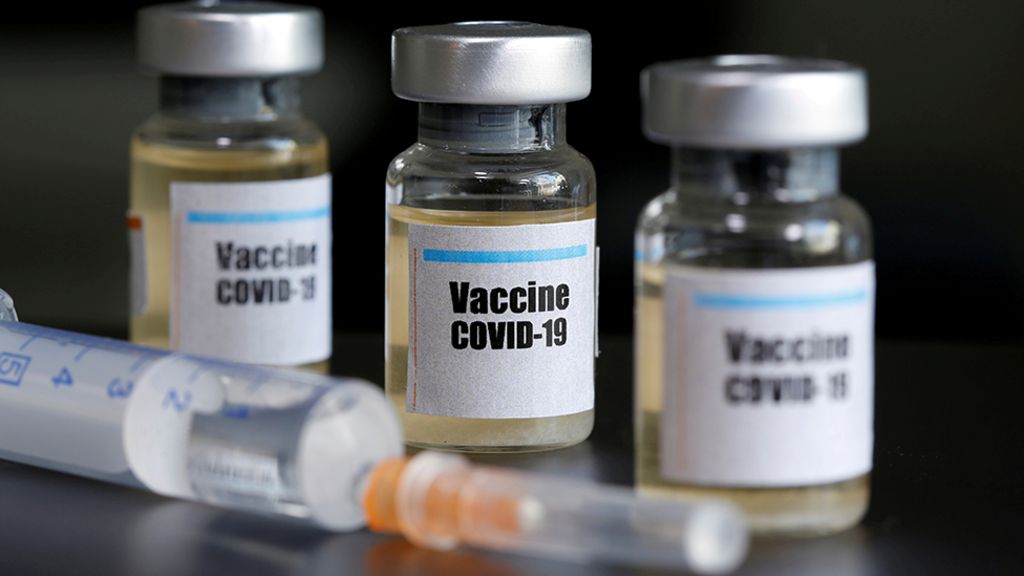Manas Dasgupta
NEW DELHI, Jan 16: The Corona vaccines have taken to wings. After the government placed orders to the Serum Institute of India (SII) for the supply of 11 million doses of “Covishield” vaccine on Monday, the vaccine vials started rolling out of the manufacturing unit early on Tuesday morning in refrigerated trucks to Pune airport and were put in different flights to reach 13 state capitals to be ready to launch the first phase of the mass immunization programme on January 16.
The union civil aviation minister Hardeep Singh Puri said 5.6 million doses of Covid-19 vaccines were dispatched from Pune by nine flights operated by Air India, Spice Jet, Go Air and Indigo to Delhi, Chennai, Kolkata, Ahmedabad, Lucknow, Guwahati, Shillong, Hyderabad, Bengaluru, Vijaywada, Bhubaneshwar, Patna and Chandigarh. The supply has reached most of the destinations by evening.
The SII chief executive Adar Poonawalla while describing the roll out of the vaccine vials from the facility a “historic moment,” said “Our main challenge is to bring it to everyone in the country. It is our challenge for 2021, let’s see how it happens.” Poonawalla also hinted at the price factor of the vaccines and said it had agreed to provide the first 100 million vials to the government at a highly subsidized price of Rs 200 per dose, which was far less than the company’s cost price, after which cost was likely to be revised up to about Rs 1,000 per dose to be sold in the open market.
A ‘puja’ was performed before the three temperature controlled trucks rolled out of the SII gates shortly before 5 am under heavy police escorts and moved towards the Pune airport, about 15 km away, from where the vaccines were flown across India.
“We make 70-80 million doses every month. Planning is underway to see how many will be given to India and foreign countries. Health Ministry has made logistics plans. We also have partnership with private players for trucks, vans and cold storage,” Poonawalla said.
But even as the people started heaving a sigh of relief with the vaccination programme to begin in a few days and the number of daily positive cases steadily declining, the union health secretary Rajesh Bhushan cautioned the country against being caught off-guard by the Coronavirus.
Addressing a media conference on Tuesday, Bhushan said, “Covid-19 situation worrisome around the world; even though daily new cases declining in India, we can’t show laxity.” He pointed out that the coronavirus infections graph was climbing in countries such as the United States (US), Brazil, Russia, United Kingdom (UK) and South Africa and that these countries had a population which was far less than that of India.
As the first batch of “Covishield” has reached the destinations, the Hyderabad-based Bharat Biotech, which has also received Emergency Use Authorisation approval from the Drug Controller General of India (DCGI) for its “Covaxin” vaccine, is set to dispatch it from the Rajiv Gandhi International Airport by late Tuesday.
Coronavirus, meanwhile, has already cast its shadow on this year’s Republic Day celebrations which will be held for the first time in over five decades without a foreign dignitary as the chief guest. The decision not to invite anyone else for the parade on January 26 was taken after the British Prime Minister Boris Johnson cancelled his scheduled India trip last week citing Coronavirus concern.
One of the factors that convinced India to decide not to invite a foreign guest was the fluid nature of the coronavirus pandemic after new strains were reported from the UK and South Africa.
This will be the first time in over five decades that the Republic Day celebrations, seen as a high point in India’s diplomatic calendar, would not have a foreign dignitary as the chief guest. The last time the parade did not have a chief guest was in 1966 when Indira Gandhi was sworn in as prime minister on January 24 after the demise of Prime Minister Lal Bahadur Shastri on January 11. There were two other years when the parade did not have a chief guest: 1952 and 1953.
Social distancing protocols due to the Covid-19 pandemic have already forced the government to opt for a truncated version of the parade, the highlight of the Republic Day celebrations that showcases India’s military might and cultural diversity.
The parade will be shorter and end at National Stadium in national capital Delhi rather than the Red Fort. The marching contingents will also be smaller, with 96 participants in each squad that was earlier made up of 144. Also, the number of spectators along Rajpath has been capped at one-fourth of the 100,000 in previous years. Children below the age of 15 will not be permitted at the parade.
The plan to have a marching contingent of the Bangladesh army participate in the parade as part of the 50th-anniversary celebrations of the 1971 liberation war of Bangladesh is so far intact. This is only the second time foreign soldiers will be marching down Rajpath as part of India’s biggest ceremonial event – the first was the French in 2016. Fifty years ago, Pakistan Army under Lt Gen AAK Nazi had surrendered to the Indian Army paving the way for the formation of Bangladesh.

